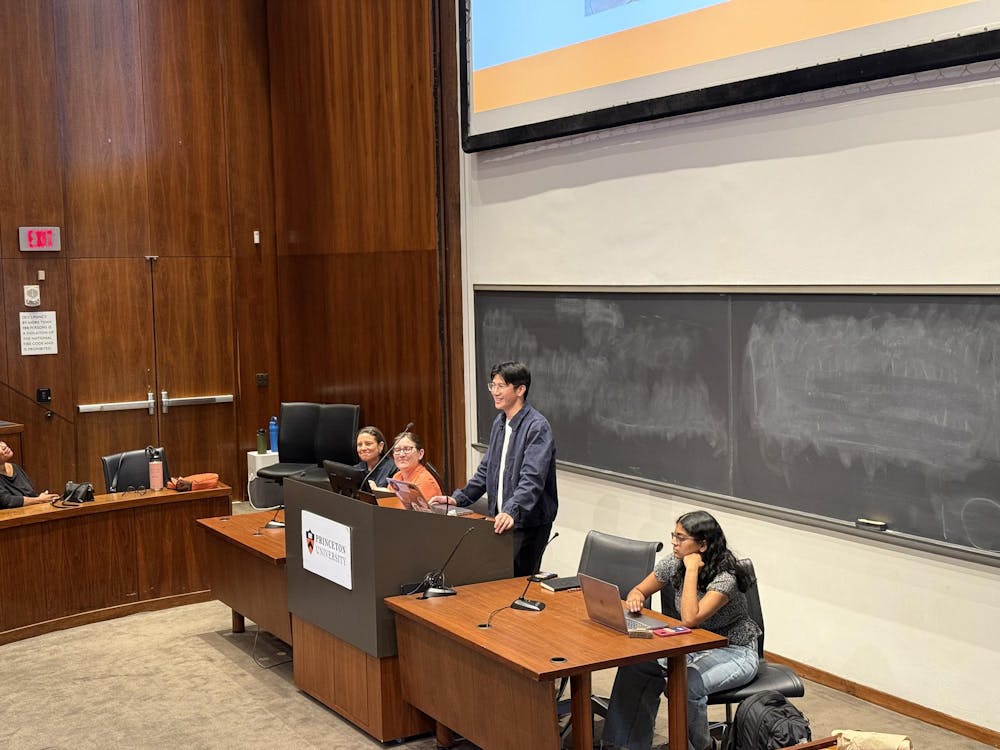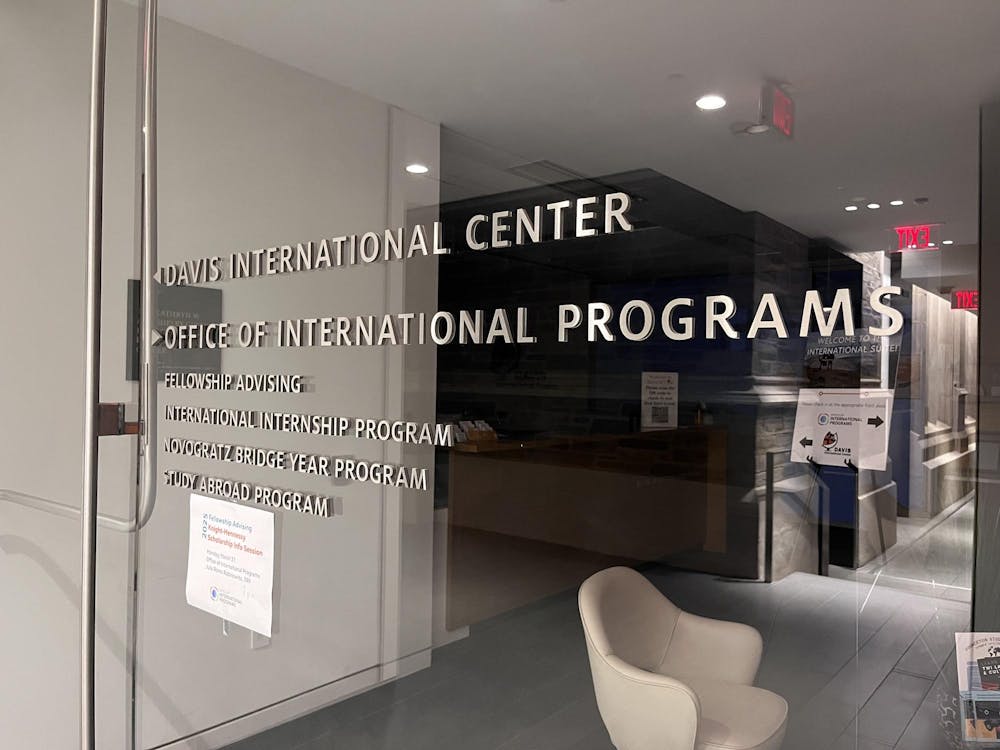Lea en español aquí.
Student-facing budget cuts have primarily impacted non-essential items like free food, merchandise, and department events with the goal of preserving the University’s most important priorities, three of Princeton’s top administrators said at an Undergraduate Student Government (USG) meeting on Sunday. Most of the cuts are between five and seven percent.
“We’re trying to do cuts that actually allow us to do bigger things … so that we’re not chipping away slowly at everything,” said Vice President for Campus Life Rochelle Calhoun.
The casualties of the University’s budget reductions — aimed between five and 10 percent for all academic departments and units — include weekend hours at smaller library locations and Wintersession, a two-week winter break program offering workshops, classes, and trips.
While Nassau Hall has provided some guidance, departments have largely been left to make their own decisions, administrators repeatedly emphasized at the meeting. However, that decentralized approach has also made it difficult to assess the fullest scope of the reductions, they said.
“We’re not looking at every single line of people’s budget restrictions. We’ve got plans that sort of gave us, you know, concepts and proof of concepts in terms of what the bottom line would look like, but not a listing out of every single action that may change,” Executive Vice President Katie Callow-Wright said. “To try to do a full accounting of everything we’re changing is really unrealistic, or really quite difficult.”
“We’ve reviewed 100 plans from individual academic and administrative meetings so that we can both give guidance to those units, and also look for trends,” said Provost Jen Rexford ’91.
Rexford acknowledged that layoffs will gradually occur and that graduate student admissions have been reduced, although the exact scope of the reductions was not immediately clear. She said that hiring for faculty and staff will continue, though at a reduced pace, and new buildings will still be constructed, but more gradually.

“We’re looking across a whole portfolio of ways that we spend money at the University for opportunities to be more efficient and to use the resources we have to support our financial priorities,” she added. According to Rexford, the University is exploring additional savings across units as well, including from off-campus real estate, IT services, and procurement.
The retreat for the University’s presidential cabinet, for one, was held on-campus this year as it was “substantially cheaper,” according to Rexford.
Administrators also said that certain adjustments perceived as related to budget cuts could be driven by other factors.
The reduction of late meal hours, for example, was a return to previous hours after tracking patterns of students, although these hours are not set in stone even now.

“Once [Dining Services] get a sense of how students are moving through the dining halls, they can make adjustments accordingly,” Calhoun said. “So you might, in fact, see some adjustments.”
Calhoun said the temporary reduction in overnight services at Frist Health Center was “a hiring issue,” as nurses were needed to staff the overnight infirmary. Calhoun did not specify whether reduced hours at Murray Dodge, where some student workers saw their hours significantly fall off or cut altogether, during the first two weeks of the school year were tied to budget cuts.
Other student-facing funding sources have not been cut. Funding for student groups remains “largely unchanged,” Associate Dean of Undergraduate Students Ian Deas said, in part because USG allocated a larger portion of its budget — about $160,000 this year up from $140,000 last year — to the Projects Board. The Projects Board funds most student club events on campus.
“Right now, most students are scared to ask for any sort of funding for their individual initiatives, which is why we voted to expand our Projects Board funding for the semester in anticipation of these budget cuts from other departments,” Deputy USG Projects Manager Marvel Roth ’28 said.
Amid concerns about transparency around budget cuts, USG members are considering avenues to share information with students.
“We’re continuing to experiment with different media strategies and partnerships to strengthen our presence and reach more students and continue to work with administrators in shaping how they communicate information,” USG President Enzo Kho ’26 wrote in a statement to the ‘Prince.’
“While I don’t think the University is being intentionally unclear, I do think they can do more to simplify and clarify what’s happening, especially when it affects everyday student life,” USG Vice President Aishwarya Swamidurai ’26 wrote to the ‘Prince.’
Swamidurai expects communication on budget cuts to be a collaborative effort between USG and the administration.
“We can help bridge gaps and amplify messages — but we don’t always have the full picture, nor are we the source of the decisions being made,” she wrote.
Sena Chang is a senior News writer for the ‘Prince.’ She typically covers campus and community activism, the state of higher education, and alumni news.
Please send any corrections to corrections[at]dailyprincetonian.com.
Correction: A previous version of this piece attributed a quote about dining halls and about the overall picture of budget cuts to Rexford. They were in fact said by Calhoun. The ‘Prince’ regrets these errors.
Correction: The reduction in the hours of late meal were not a result of budget cuts, and in fact came about independently of those.








